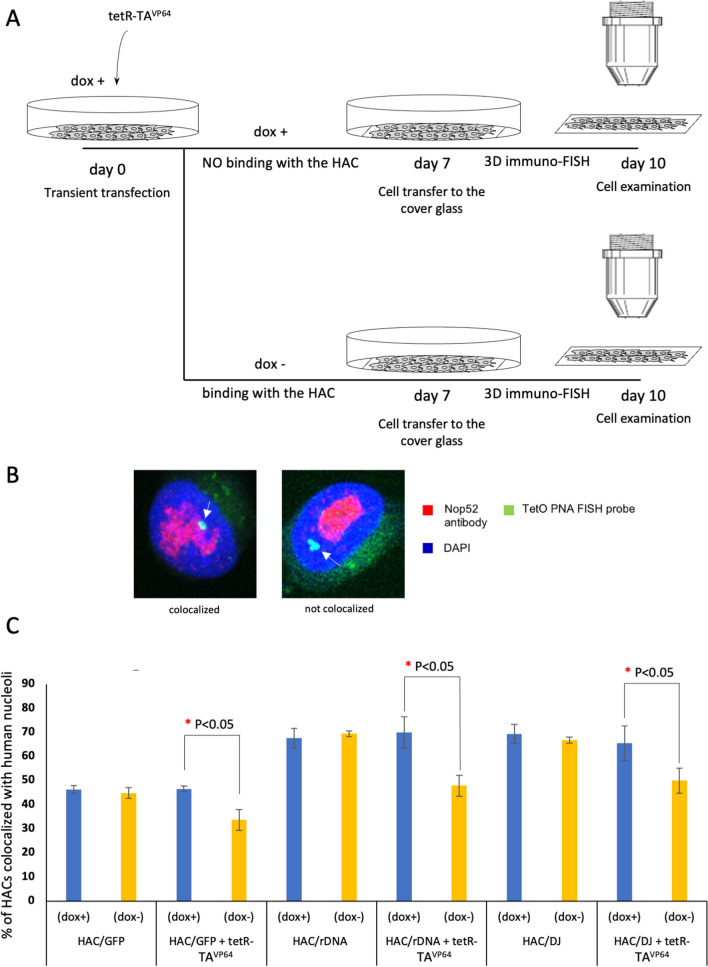Fig. 4.
Effect of chromatin status on HAC localization in the nucleolus in human HT1080 cells. a Scheme of the experiment. On day 0, the cells with HAC/GFP, HAC/rDNA and HAC/DJ were transfected with tetR-tTAVP64 with an efficiency close to 100%. Cells were incubated for 7 days in the presence or absence of doxycycline and then transferred onto the gelatin-covered microscopy glass slide. On day 10, 3D immuno-FISH was performed. b 3D immuno-FISH with anti-RRP1 antibodies (Nop52) (red) and the PNA probe for the alphoidtetO array of the HAC (green). Nuclei were stained with DAPI (blue). Nucleolar- and non-nucleolar-associated HACs are indicated by white arrowheads. c Relative changes of HACs colocalization with the nucleoli in dox-plus versus dox-minus medium after transfection by the tetR-tTAVP64 fusion protein genes. Transfection by tetR-tTAVP64 in a dox-minus medium leads to its binding to tetO sequences on the HAC kinetochore and reduction of HAC/rDNA and HAC/DJ association with the nucleoli (1.5-fold and 1.5-fold decrease, respectively). Significant differences were calculated using a two-tailed nonparametric Mann–Whitney U test. Statistically significant differences are indicated with red asterisks

